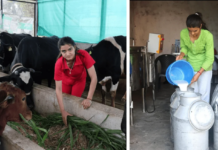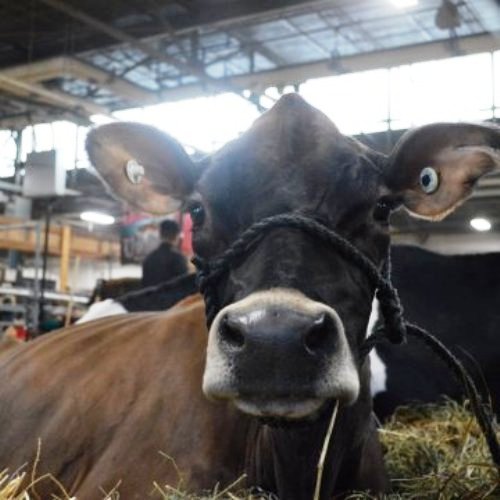New Delhi, February 17, 2023: Texas dairy producers continue to face challenges despite favorable milk prices over the past year, according to a Texas A&M AgriLife Extension Service expert.
Jennifer Spencer, Ph.D., AgriLife Extension dairy specialist, Stephenville, says milk prices remain historically good for producers, and demand continues to be strong for milk and milk products from cheese to ice cream. But higher input costs are eating into profitability, she said.
Spencer says Texas continues to perform well and add dairy capacity and cows. Texas moved past Idaho to rank third nationally in milk production for the first six months of 2022. However, summer heat led to reduced production and Texas finished fourth for the year.
Texas dairies produced 15.1 billion pounds of milk as of Dec. 1 which was 6% above the same time last year. Spencer expected the 2022 total to be near 16 billion pounds by year’s end compared to 15.6 billion pounds in 2021, according to the U.S. Department of Agriculture.
Prices remained above $23 per hundredweight after fluctuating between $23-$25 per hundredweight in 2022, she said. The average price per hundredweight was $23.67.
But dairy producers faced more challenges this year as higher costs cut into potential profits, Spencer says.
Feed costs represent about 60% of dairy producers’ expenses in an average year, she said. This year, drought and high fertilizer costs impacted forage yields, and prices for grains and supplemental feed like cotton seed increased dramatically as well.
Fuel costs and labor shortages also hindered dairy operators more than a typical year, Spencer says.
“There was more opportunity for dairy producers to be profitable in 2021 because they didn’t have to struggle to keep up with feed and other rising costs,” she says. “It was a challenging year despite the good prices.”
Texas dairies continue to follow industry trends that show dairy size and overall production are rising as the number of operations declines.
TEXAS DAIRY PRODUCTION SET TO EXPAND
Texas could see significant growth in dairy production over the next several years as processing capacity expands to handle milk. Multiple processing facilities dedicated to soft cheese products like cottage cheese, cream cheese and other spreadable cheeses are slated to expand or open over the next two years to meet growing demand.
Cheese production was the major destination for the 226 billion pounds of milk produced in the U.S. in 2021. It takes 10 pounds of milk to make 1 pound of cheese.
A facility in Amarillo will open later this fall, while facilities in Stephenville are expected to expand. Another facility in Lubbock is expected to open in 2024, and a new facility in western Kansas is expected to pull some milk from the Texas Panhandle according to the reports published in agriculture.com.
Around 80% of Texas milk is produced by dairies in the Texas Plains.
“Texas dairies added about 25,000 cows to their production capacity this year, and the processing expansion will help producers add to that growth,” she says. “Processing capacity is one of the limiting factors holding production back.”
Liquid milk consumption continues to decline, but dairy products for lactose intolerant consumers continue to trend upward, Spencer said. Ice cream demand during the summer typically results in seasonally higher milk prices.
Whey, which goes into products like muscle recovery powders and baby formula, has become a growing piece of dairy demand, Spencer said. It is a byproduct of cheese production and was considered waste before a use was found for its 99% amino acid protein.
Spencer says consistently expanding dairy options for consumers is driving expansion of overall U.S. production.
“Producers are very progressive in Texas, and so they are adapting to the challenges to maintain production and profitability,” she says. “The demand is there, and I think there is an opportunity for Texas dairy production to continue growing.”

































